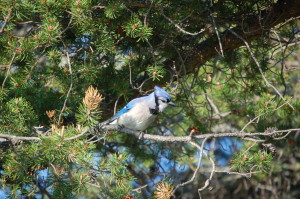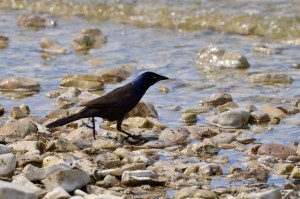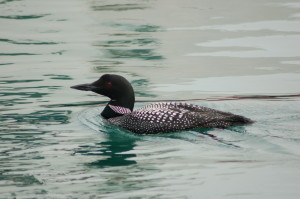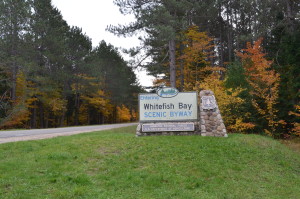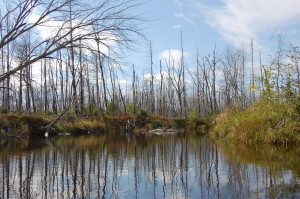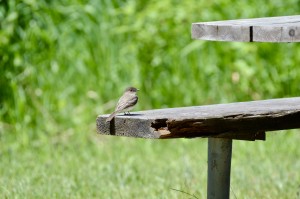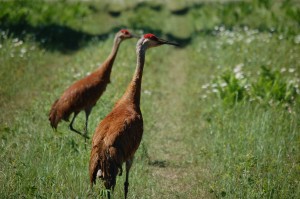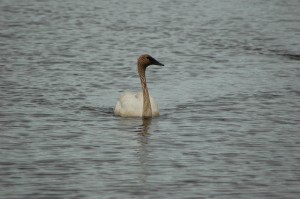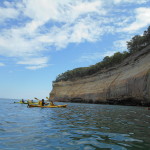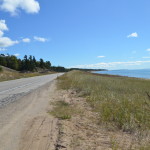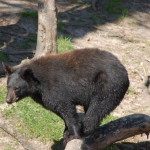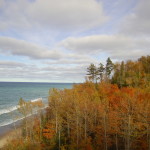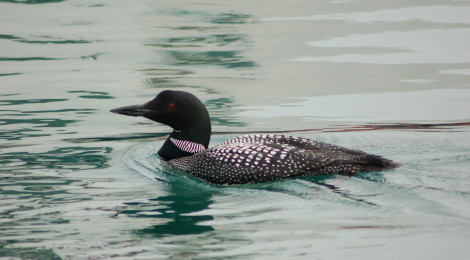
New Michigan Birding Trail Puts Spotlight On Eastern Upper Peninsula and Three Great Lakes
A late August kick off event in Paradise marked the official grand opening of the Shore to Shore Birding Trail in Michigan’s eastern Upper Peninsula. This new Michigan birding trail covers more than 40 locations and 400 miles on. a self-guided route through four counties. With shoreline on Lake Huron, Lake Michigan, and Lake Superior this trail offers many birding hotspots and the chance to see many different species. The trail also covers forests, inland lakes, rivers, and wetlands. Today we’ll take a look at this new trail and what each of the seven main areas has to offer. We’ve been fortunate to visit many of these locations over the years, and it’s great that a new website for the trail and increased signage will help make these sites more accessible and enjoyable for many more visitors in the future.
The Shore to Shore Birding Trail website features an interactive map and breaks the birding sites down into seven areas: Naubinway – St. Ignace, Sault Ste. Marie, Scenic Byway/Bay Mills, Whitefish Point, Trout Lake and Raco, Newberry, and Seney. “Crowned by Whitefish Point to the north, the Shore to Shore Birding Trail is home to the premier birding hotspot in Michigan. Migrant waterbirds, songbirds, shorebirds, and raptors pass by the Point in spring and fall migration in tremendous numbers, and rarities often show up. From there, the trail ventures south and east through forests, bogs, and patches of grassland. Ten different species of owl can be found throughout the area, including Snowy, Great Gray, long-eared owl, and Northern-Hawk Owls – although seeing all will require a bit of luck. The sandy beaches of the Eastern Upper Peninsula are home to the endangered Piping Plover, and the recently delisted Kirtland’s warbler finds its home in young jack pine.”
The Naubinway – St. Ignace Area offers eight points of interest, including the Big Knob State Forest Campground, the Cut River Bridge Roadside Park, the Engadine Grassland Area driving loop, Epoufette Bay Road and Hendricks Township Park, Gros Cap Roadside Park, Hog Island State Forest Campground, Naubinway Harbor, and Point La Barbe. Most of these sites are close to Lake Michigan, offering the chance to see shorebirds, raptors, and songbirds.
The Sault Ste. Marie area offers six points of interest for birders: the Algonquin Ski Trails, Ashmun Bay Park, the LSSU Center for Freshwater Research and Education, the Lynn Trail System at the Sault Seal Recreation Area, Rotary Park (a personal favorite of ours), and the Bailey-Lagerstrom Nature Preserves on Sugar Island. Most of these sites are close to the St. Mary’s River, where ducks, eagles, hawks, woodpeckers, loons and more can be found.
West of Sault Ste. Marie, the Scenic Byway/Bay Mills area offers eight more points of interest. This is one of our favorite drives for fall color and many of the same sites we enjoy on that trip also serve as birding hotspots. The Shore to Shore Birding Trail highlights stops at Bay Mills Resort and Casino Boat Launch, Bay Mils Riverview Park, the Chippewa Luce Conservation District Piche Grasslands, the Dafter Driving Loop, Pendills Creek National Fish Hatchery, the Point Iroquois Lighthouse, numerous Scenic Byway pull offs, and the Spectacle Lake Overlook (Mission Hill). There are great spots for spotting eagles and raptors on this route, and keep your eyes peeled for ducks, terns, geese, and perhaps even the sharp-tailed grouse.
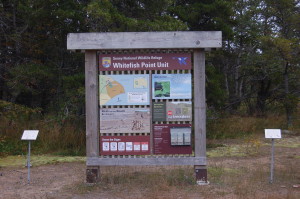
The Whitefish Point area is one of the busiest migratory flyways in the Upper Peninsula and four points of interest are called out for birdwatchers looking to track down hawks, loons, grebes, pintails, tanagers, or woodpeckers. Recommended stops include Lone Pine Road, the Tahquamenon Rivermouth, Vermilion Road and the Andrus State Forest Campground, and Whitefish Point/Whitefish Point State Harbor.
The next area on the trail moves inland and includes several stops that overlap with the Tahquamenon Scenic Byway and some that head into the Hiawatha National Forest. Trout Lake/Raco Area stops include the Anna Badgley Little Trout Lake Nature Preserve, Dick Road and Ranger Road, the Eckerman Trout Pond, Forest Roads 3344 and 3145, and the Soldier Lake National Forest Campground. Many species of warbler can be found at these stops, and you might also encounter grouse, kestrels, woodpeckers, ducks, mergansers, osprey, and even bald eagles.
Four points of interest are called out in the Newberry area: check out waterfowl at the Dollarville Flooding, search for songbirds at Hulbert Bog, check out the already well-signed trails at the Silver Creek Birding Trail, and make a stop at Soo Junction Road (CR-381) to look for hawks, warblers, nuthatches, chickadees, and more.
The final area of the Shore to Shore Birding Trail centers around the Seney National Wildlife Refuge. at almost 100,000 acres this refuge is home to swans, sandhill cranes, ducks, osprey, eagles, and even the oldest known pair of loons. Stops here include Driggs River Road and the C-3 Pool, the Marshland Drive Wildlife Loop, the Northern Hardwoods Trails, and the Pine Ridge Nature Trail.
The excitement for this new Michigan birding trail shouldn’t just be limited to birders, as many of these sites overlap with popular tourist destinations and more visitors will be able to learn about local birds and hopefully see some during their visit. If you were already heading to the Eastern Upper Peninsula this year, make sure to grab your binoculars and camera and add a few of these stops to your itinerary. Michigan being surrounded by the Great Lakes makes us a popular destination for many unique and important bird species. We can’t wait to check out more of these great highlighted locations and see what new birds we can find, be sure to let us know what you see on your travels as well!

